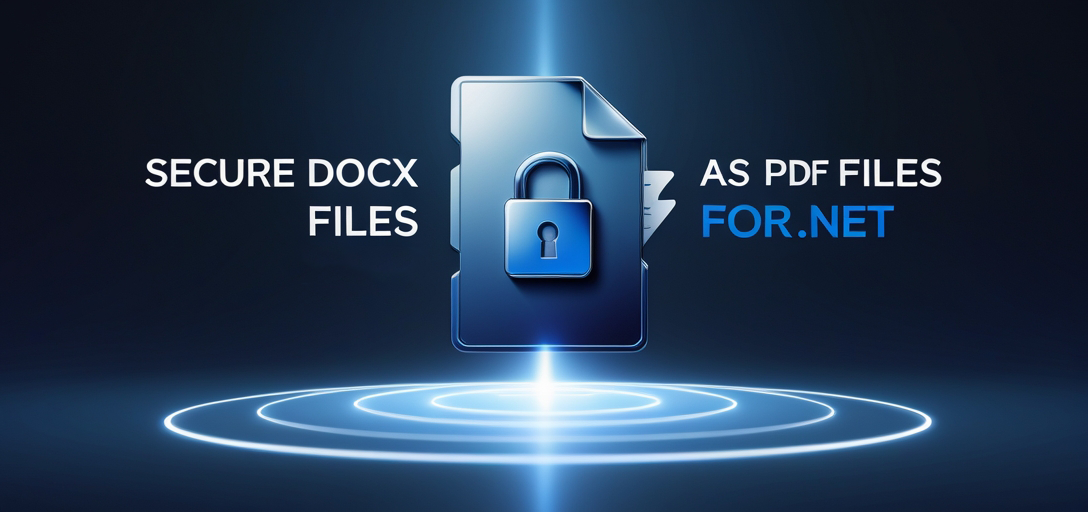Introduction
In today’s digital age, safeguarding sensitive documents is crucial. Whether you are a business protecting intellectual property or an individual securing personal information, converting Word files into password-protected PDFs can be a game-changer. This tutorial will guide you through using GroupDocs.Viewer for .NET to render DOCX documents into protected PDFs with specific restrictions, such as denying printing.

You will learn how to:
- Install and set up GroupDocs.Viewer for .NET.
- Render a DOCX file to a password-protected PDF using C#.
- Configure security settings, including passwords and permissions.
- Apply this feature in real-world scenarios.
Prerequisites
Before you begin, ensure you have the following:
- .NET SDK: Installed on your machine.
- IDE: Visual Studio or another .NET development environment.
- GroupDocs.Viewer for .NET: Version 25.3.0 or later. You can install it via NuGet.
- Basic Knowledge: A solid understanding of C# and the .NET framework.
Install via NuGet
Use the following command in your Package Manager Console:
Install-Package GroupDocs.Viewer -Version 25.3.0
Or via the .NET CLI:
dotnet add package GroupDocs.Viewer --version 25.3.0
Licensing
GroupDocs.Viewer for .NET requires a license for full functionality. You can get a free temporary license for evaluation or purchase a full license.
Render DOCX to a Protected PDF
This guide will walk you through rendering a DOCX file to a PDF with built-in protection, including setting passwords and defining permissions.
Step 1: Define Output Directory and File Path
First, specify the directory where the rendered PDF will be saved.
using System.IO;
// Define the output directory
string outputDirectory = "YOUR_OUTPUT_DIRECTORY";
// Define the path for the output PDF file
string outputFilePath = Path.Combine(outputDirectory, "output.pdf");
Note: Replace YOUR_OUTPUT_DIRECTORY with your desired path.
Step 2: Configure Security Settings
Set up the security features, such as passwords for opening the document and for changing permissions.
using GroupDocs.Viewer.Options;
// Configure security settings
Security security = new Security
{
DocumentOpenPassword = "open_password",
PermissionsPassword = "permissions_password",
Permissions = Permissions.AllowAll ^ Permissions.DenyPrinting
};
Explanation:
DocumentOpenPassword: Sets the password required to open the PDF.PermissionsPassword: Sets the password required to change the permissions.Permissions: Defines the allowed actions. In this case, we allow all permissions except for printing by using a bitwise XOR operation.
Step 3: Configure PDF View Options
Create an instance of PdfViewOptions and apply the security settings.
// Create PDF view options with the security settings
PdfViewOptions options = new PdfViewOptions(outputFilePath)
{
Security = security
};
Step 4: Load and Render the Document
Initialize the Viewer object with your DOCX file and call the View() method with the configured options.
using GroupDocs.Viewer;
// Path to your DOCX file
string documentPath = "YOUR_DOCUMENT_DIRECTORY/SAMPLE.docx";
try
{
using (Viewer viewer = new Viewer(documentPath))
{
// Render the document to a protected PDF
viewer.View(options);
}
System.Console.WriteLine("\nSource document rendered successfully.\nCheck output in {0}", outputDirectory);
}
catch (System.Exception exp)
{
System.Console.WriteLine("Exception: " + exp.Message);
}
Troubleshooting: Ensure that the file paths are correct and that your application has write permissions to the output directory.
Practical Applications
- Legal Documents: Secure sensitive legal paperwork by denying printing to ensure confidentiality.
- Financial Reports: Protect financial documents with passwords while allowing restricted editing permissions.
- Internal Memos: Share internal memos securely within an organization, preventing unauthorized copying or printing.
Performance Considerations
- Resource Management: Use a
usingstatement to ensure theViewerobject is properly disposed of. - Large Documents: For large documents, consider using asynchronous processing to improve application responsiveness.
- Batch Processing: When processing multiple documents, implement a batching mechanism to manage resources efficiently.
Conclusion
By following this guide, you have learned how to leverage GroupDocs.Viewer for .NET to render DOCX files into secure, password-protected PDFs. This not only enhances document security but also provides versatile options for controlling access and usage permissions. As a next step, explore other features of the GroupDocs suite to further enhance your application’s capabilities.
FAQs
How do I ensure my documents are fully protected?
Use a combination of a document open password and specific permission restrictions, such as denying printing or copying.
Can I change the permissions after the PDF has been rendered?
Yes, you can re-render the document with updated security settings using GroupDocs.Viewer.
What if my PDF viewer does not respect the permissions?
Ensure you are using a PDF reader that adheres to the standard security protocols defined in the PDF specification.
How do I handle the batch processing of a large number of documents?
Consider implementing multithreading or task parallelism in your .NET application for improved efficiency.
What should I do if I encounter an error during rendering?
Check the console output for detailed error messages and verify your file paths, library versions, and license validity.